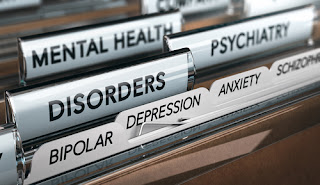On the heels of Mental Illness Awareness Week or MIAW comes ‘The State of Mental Health In America’ report. The nation’s leading community-based nonprofit in the field of mental wellness, Mental Health America (MHA), is responsible for the accounting of mental illness in the United States. The report lets us know where we stand regarding the prevention, screening, and treatment of the psychological maladies plaguing millions of Americans. The organization states:
Our work is driven by our commitment to promote mental health as a critical part of overall wellness, including prevention services for all; early identification and intervention for those at risk; integrated care, services, and supports for those who need it; with recovery as the goal.
Of course, given the pervasiveness of mental illness in the U.S., MHA relies on the assistance of several affiliates in compiling of their report. The nonprofit would not be able to give us a prognosis of mental health throughout the country if it were not for the Substance Abuse and Mental Health Services Administration (SAMHSA) and Centers for Disease Control and Prevention (CDC); and, the U.S. Department of Education, which collects survey data. Below you will find some of the more notable findings.
Mental Health in America Final Report
First, let’s take a glimpse at some of the uplifting data from MHA. The number of American adults with mental health and substance abuse problems is down; the former, from 18.19 to 18.07 percent, and 8.76 to 7.93 percent for the latter. While the decrease is noticeably slight, it is worth remembering that each percentage point accounts for hundreds of thousands of people. Unfortunately, MHA discovered some troubling data regarding adult suicidal ideation; it is up to 4.04 percent from 3.77. Major depressive episodes in youth are also on the rise; the organization found an almost four percentage point increase from 8.66 to 12.63 percent.
“Sadly, our report shows that there have been alarming increases in adult suicidal thoughts and major depression in youth,” said Paul Gionfriddo, president and CEO of Mental Health America, in a press release. “Despite mental health being something that more and more people are talking about – far too many people are still suffering. People are simply not receiving the treatment they need to live healthy and productive lives – and too many don’t see a way out.”
Perspective:
- An estimated 9.8 million adults had serious suicidal thoughts last year, 200,000 more than the year before.
- Severe major depression affects more than 2 million young Americans.
- 10 years pass, on average, between the onset of mental illness and receiving treatment.
- More than 24 million people are not getting treatment for a mental health disorder.
Mental health illness is treatable, and recovery is possible provided interventions occur. However, ten years between symptom onset and treatment is wholly unacceptable; when conditions go unchecked, symptoms get worse, and tragedy often results.
“Our children are crying out for help,” says Gionfriddo. “We must continue to improve access to care and treatments, and we need to put a premium on early identification and early intervention for everyone with mental health concerns. We must address these mental health concerns before crisis and tragedy strikes—before Stage 4.”
Co-Occurring Disorder Recovery
While we specialize in the treatment of adults at Hope By The Sea, we are hopeful that events like MIAW and this new report will encourage parents and educators to have more conversation about mental health. The sooner discussions happen, the quicker treatment can commence.
If you are an adult struggling with substance use disorder or a co-occurring illness, please contact Hope By The Sea today to learn more about our program and the services we provide. We are confident that the miracle of recovery can be yours too.
The Hope By The Sea team would like to express our sincerest gratitude to our Nation’s veterans. We wish you a Happy Veterans day!


